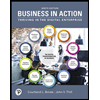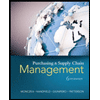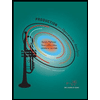We are also taking the following steps (as applicable):
Can you identify the 5 traits of report writing for me?


What is report writing?
Essentially, a report is a short, sharp, concise document which is written for a particular purpose and audience. It generally sets outs and analyses a situation or problem, often making recommendations for future action. It is a factual paper, and needs to be clear and well-structured.
Why report writing is important?
Having the option to recognize the crowd and reason for your report. Realizing how reports are perused by your crowd. ... Seeing how great association of your report enables the peruse to discover the data they need. Having the option to impart well both recorded as a hard copy and utilizing graphical information.
Seven C's of communication
You compose messages, encourage gatherings, partake in telephone calls, make reports, devise introductions, banter with your partners… the rundown goes on.
We can go through nearly our whole day imparting. All in all, how might we give an enormous lift to our efficiency? We can ensure that we impart in the most clear, best way imaginable.
This is the reason the seven Cs of correspondence give an agenda to ensuring that your gathering, messages, telephone calls, reports, and introductions are very much developed and clear – so your crowd gets your message.
As per the seven Cs, correspondence should be: clear, compact, concrete, right, intelligible, complete and polite.
1. Clear
When composing or addressing somebody, be clear about your objective or message. What is your motivation in speaking with this individual? In the event that you don't know, at that point your crowd won't be certain all things considered.
Honestly, attempt to limit the quantity of thoughts in each sentence. Ensure that it's simple for your peruse to comprehend your significance. Individuals shouldn't need to "set out to find the real story" and make suspicions all alone to comprehend what you're attempting to state.
Data and activities required, must be clear so the peruse has the data they have to make a move.
2. Concise
At the point when you're compact in your correspondence, you adhere direct and keep it brief. Your crowd would not like to peruse six sentences when you could impart your message in three.
3. Concrete
At the point when your message is solid, at that point your crowd has an away from of what you're letting them know. There are subtleties (however not very many!) and distinctive realities, and there's laser-like core interest. Your message is strong.
4. Correct
At the point when your correspondence is right, it accommodates your crowd. What's more, right correspondence is additionally blunder free correspondence.
- Do the specialized terms you utilize fit your crowd's degree of instruction or information?
- Have you checked your composition for linguistic mistakes? Keep in mind, spell checkers won't find everything.
- Are largely names and titles spelled effectively?
5. Coherent
At the point when your correspondence is sound, it's legitimate. All focuses are associated and applicable to the fundamental point, and the tone and stream of the content is predictable.
6. Complete
In a total message, the crowd has all they require to be educated and, if material, make a move.
7. Courteous
Respectful correspondence is neighborly, open, and fair. There are no concealed affronts or uninvolved forceful tones. You remember your pursuer's perspective, and you're sympathetic to their requirements.
Step by step
Solved in 3 steps









